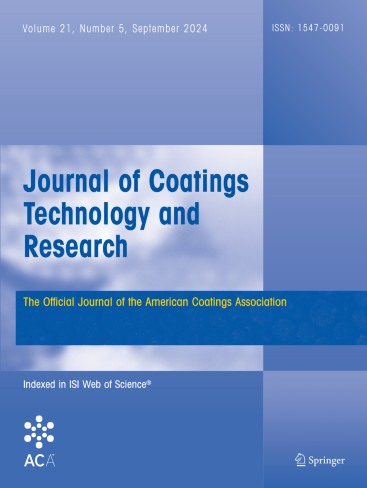Microphase separation within the polyurethane (PU) matrix is caused by thermodynamic incompatibility between the soft and hard segments and the movement of them. Although degree of phase separation (DPS) is a sensitive and important parameter and reflects the formation of the internal hydrophobic network structure, research on the relationship between DPS and the corrosion resistance performance of PU coatings is very limited. This study prepared a series of PU coatings with different soft and hard segment ratios, quantitatively calculated DPS, and analyzed the residual situation of the -NCO groups of each coating using infrared spectroscopy (FTIR). The crosslinking density (XLD) of the coatings was obtained using the swelling equilibrium method. The corrosion resistance performance of the coatings was periodically tested through salt water immersion experiments, Tafel tests, and electrochemical impedance spectroscopy (EIS). It was found that coatings with a high hard segment content have higher DPS and XLD. The samples with the highest hard segment content (sample PU3-5-10 and PU3-5-11) possessed the highest DPS values (24.28 and 41.95%) and showed the lowest corrosion current density (9.3 × 10−11 and 3.25 × 10−11 A/cm2) and the highest impedance values (6.22 × 108 and 1.24 × 109 Ω cm2) before salt water immersion; however, PU3-5-11 showed a much more rapid decline in impedance after 40 days of immersion. FTIR analysis indicated that the presence of easily hydrolyzable residual -NCO groups should be the main reason for the worsening. It was also found that the DPS of the coatings is highly correlated with their XLD, and the relationship between DPS and various corrosion resistance indicators is basically consistent with that of XLD.




